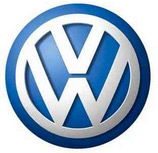 Volkswagen is taking ownership of a crisis that could seriously erode the company’s brand reputation.
Volkswagen is taking ownership of a crisis that could seriously erode the company’s brand reputation.
The company said Sept. 21 that 11 million diesel cars worldwide were equipped with the same software that was used to cheat on emissions tests in the United States. That’s according to the New York Times. The company also issued a de facto profit warning because of the costs of repairing vehicles to comply with pollution standards.
The statement was the carmaker’s first admission that diesel cars outside the United States may have the software that led the Environmental Protection Agency to accuse the carmaker of deliberately evading pollution tests. Previously, the company had acknowledged only that the problem affected about 500,000 vehicles in the United States.
Volkswagen said it would set aside 6.5 billion euros, or about $7.3 billion, to cover the cost of servicing the affected vehicles “and other efforts to win back the trust of our customers,” the Times said. The money would be booked in the third quarter, Volkswagen said.
According to the Wall Street Journal, the U.S. Justice Department is conducting a criminal probe of Volkswagen regarding the automaker’s alleged cheating on U.S. emissions tests.
The crisis has already taken a toll on German-owned Volkswagen. Following the revelations, the automaker’s stock price tumbled from $131.20, to $101.35, or 23 percent.
Volkswagen not only will have to salvage ties with Wall Street, but Main Street, as well. Due to the severity of the charges, our guess is that legal keeps PR on a pretty short leash when it comes what the company can communicate to the public.
At the same time, the scandal puts the onus on PR to contain the damage to the company’s reputation.
Volkswagen CEO Martin Winterkorn on Sept. 20 issues an apology, saying the company “had broken the trust our customers and the public.” Volkswagen said it would stop selling the remainder of its 2015 also said it would model Volkswagen and Audi diesels and not offer its 2016 diesel cars.
But that’s the easy part. The hard part is to explain to the public why the company tried to cut corners, how it’s going to ensure that it won’t happen again and what the company is going to do—specifically—to improve its protocols and earn the trust back of consumers. It’s a tall order.


 There’s a fine line between newsjacking and taking advantage, aka ambulance chasing. Our job as PR professionals is to tread it carefully.
There’s a fine line between newsjacking and taking advantage, aka ambulance chasing. Our job as PR professionals is to tread it carefully. PR firms need to be mindful of ways their work product may be protected by the attorney-client privilege whenever working with a client’s internal legal team or its external legal counsel.
PR firms need to be mindful of ways their work product may be protected by the attorney-client privilege whenever working with a client’s internal legal team or its external legal counsel. Manuel Rocha, former US ambassador and intenational business advisor to LLYC, plans to plead guilty to charges that he was a secret agent for Cuba.
Manuel Rocha, former US ambassador and intenational business advisor to LLYC, plans to plead guilty to charges that he was a secret agent for Cuba. CEO mentoring is an often-overlooked aspect of why CEOs are able to make good decisions, and sometimes make bad ones—all of which intersects with the role and duties of a board.
CEO mentoring is an often-overlooked aspect of why CEOs are able to make good decisions, and sometimes make bad ones—all of which intersects with the role and duties of a board.  How organizations can anticipate, prepare and respond to crises in an increasingly complex world where a convergent landscape of global challenges, threats and risks seem to arrive at an unrelenting pace.
How organizations can anticipate, prepare and respond to crises in an increasingly complex world where a convergent landscape of global challenges, threats and risks seem to arrive at an unrelenting pace.


 Have a comment? Send it to
Have a comment? Send it to 
No comments have been submitted for this story yet.